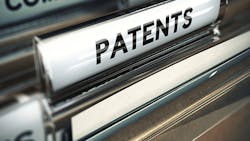Inventors Opt for Disclosure Over Secrecy
A recent study of 1.8 million U.S. patents revealed that inventors are choosing to opt out of secrecy provisions and let the Patent Office publish the technical details behind their patents. This goes against conventional wisdom, which holds that inventors cherish secrecy when it comes to their inventions and worry about their ideas being stolen.
The study was co-authored by economist Stuart Graham, a professor at Georgia Technical Institute’s business college and the first chief economist appointed to the U.S. Patent Office (2010-13). The study examined and analyzed utility patents, which are available on new and useful processes, machines, manufactured articles, and compositions. These are the most common type of patent with more than 570,000 filed in the U.S. in 2013. The purpose of the study was to see what effects have been caused by passing the American Inventors Protection Act (AIPA) in 2000. It required that patent applications be published 18 months after first filing. Prior to 2000, applications filed only in the U.S. were kept secret and made public after approval, typically 36 months after filing.
During congressional debate over AIPA, inventors raised concerns that reduced secrecy would harm small inventors and undermine the inventive spirit of the U.S. So a loophole was included that let inventors maintain secrecy of their applications if they were not filing for parallel foreign patent protection on the same invention. In the U.S., that accounts for about half the granted patents.
The study focuses on whether inventors used the secrecy loophole and whether their patents differed in important ways from those who did not. Graham and his team examined granted patents filed from 1995 to 2005 and analyzed the inventors’ disclosure preferences. Their analysis found that among those not seeking foreign protection, about 85% of inventors filing patents since 2000 chose to disclose patent information prior to receiving patent approval.
“Small U.S. inventors are not choosing the secrecy route,” Graham said. “When they patent only in the U.S., they are choosing secrecy in only about 15% of the cases, not statistically different than the rate among all other types of inventors.”
Another major concern regarding AIPA was that disclosing patent secrets would slow innovation in the U.S. and that society would get less meaningful inventions. Contrary to these arguments, researchers found that inventors who chose secrecy had patents that were less valuable than those that opted for disclosure.
The study indicates that providing more patent information to society earlier could be socially beneficial. Publishing the information earlier may also give other innovators a head start and help society avoid duplicative research spending.
Future studies will try to pinpoint why so many inventors choose not to keep their patent information secret until the patent is granted. Some possible answers are that disclosure acts as an early signal to competitors to not innovate in that technology space, or announces to potential licensees that a technology is coming to the marketplace and it may be available for someone else’s manufacturing or engineering process.
“This study is a first window into what inventors are really doing. The next question is, why are they doing it?” Graham said. “It remains for us to figure out why inventors seeking to maximize the value of their inventions are not particularly interested in pre-patent secrecy.”
